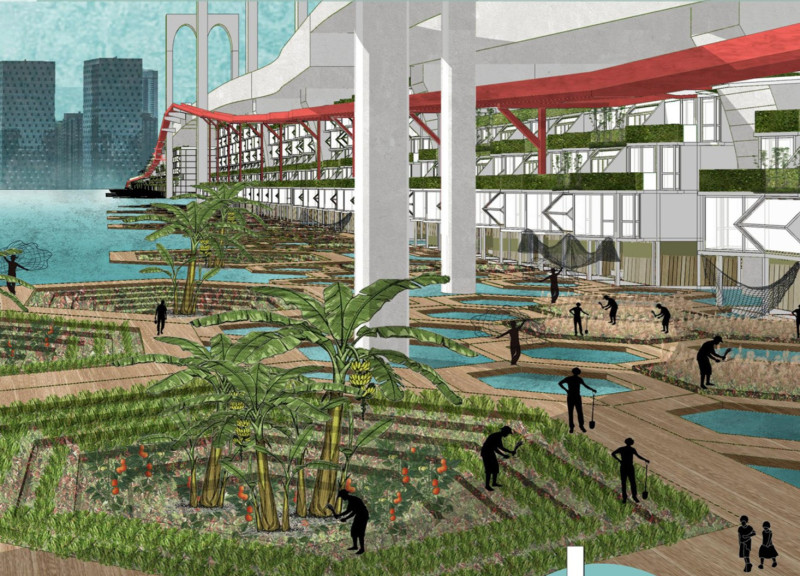5 key facts about this project
### Project Overview
**Project Name:** The Green Line
**Location:** Under the Sai Wan Bridge, Macau
**Functionality:** Affordable apartments, ocean ranches, cycling walkway system.
The Green Line addresses urban challenges in Macau, a densely populated region facing a shortage of affordable housing and limited land resources. This design integrates residential, agricultural, and recreational functions to create a multi-functional urban space that promotes sustainable living.
### Spatial and Functional Integration
The residential component includes 346 affordable housing units with various configurations, specifically designed to maximize natural light and ventilation, thereby enhancing energy efficiency. The modular layout accommodates different family sizes, promoting flexibility in living arrangements. Complementing the residential space, the incorporation of ocean ranches introduces aquaculture into the urban landscape, supporting sustainable food production and ecological restoration. These areas utilize stepped landscape planting to house diverse crops and aquatic species.
An extensive cycling walkway system, positioned beneath the Sai Wan Bridge, facilitates safe transit for both pedestrians and cyclists, encouraging active transportation. This network decreases dependence on motor vehicles and promotes healthier lifestyle choices. Complementary public spaces, such as community parks, are strategically designed to enhance social interaction and provide recreational opportunities for residents.
### Material and Sustainability Considerations
Material selection plays a significant role in the project's environmental impact. The use of durable concrete for structural elements ensures stability, while timber adds warmth in pathways and landscaped areas, fostering a natural connection. Glass is utilized in building facades to maximize natural light, and recycled materials are incorporated wherever feasible to reduce environmental footprints. Green roofs and living walls enhance biodiversity, improve air quality, and provide thermal insulation, reflecting the project’s commitment to ecological health and sustainability.
This approach to urban development, combining housing, aquaculture, and active transportation routes, represents an innovative strategy for integrating ecological considerations into everyday urban living.


















































